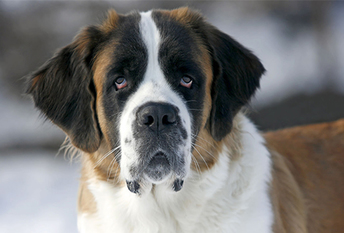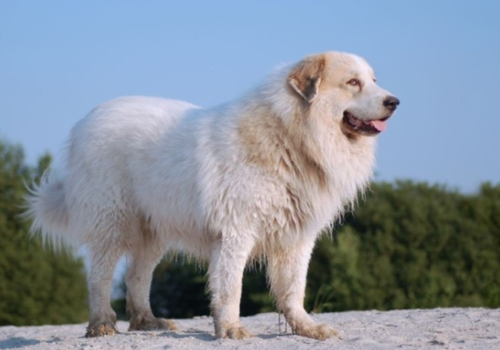Bathe your Pyrenean Mastiff as required, though less is better in order to retain the natural oils in his coat. Brushing at least every three days will keep the coat mat-free and fresh.
Trim nails to include dewclaws, and trim mats that may appear between the toes. The Pyrenean Mastiff is a double-coated breed, so it does shed twice a year. Beyond those times, it does not typically shed much hair. Use a rake to aid in removing loose hairs when shedding.
Allowing free play all the time except right after eating is fine, but walking your Pyrenean Mastiff puppy can be harmful if the distance is not increased slowly. Extra-large-breed puppies grow rapidly, and their bones are soft and take a long time to harden and mature.You also want to be sure that you try to walk them on soil or unpaved paths, if at all possible.
The Pyrenean Mastiff is not an overly active breed, but it was bred to work so it does best when it is trained to perform a job or task.As a pet, this gentle giant will need daily physical activity and mental stimulation to stay happy and fit.
Concrete is hard on their joints.Options for exercise include playtime in the backyard, preferably fenced, or being taken for walks several times a day. Pyrenean Mastiffs are a relatively calm breed, but they do need their exercise to remain mentally and physically fit.
Naturally, these dogs are not well suited to life in condos and apartment buildings- despite their calm nature and moderate exercise needs, they do need a lot of space to feel happy.
Before getting a dog of this size, you should be aware that they need a lot of food to stay full and healthy. The exact daily amounts of food will vary, but 10 to 14 cups is an average. A Pyrenean Mastiff will need 40 to 80 lbs of dog food in a month.
Most pet owners decide onhigh-quality dry food for dogs, as it offers complete nutrition and it is readily available. But, it has to be premium kibble made from high-grade ingredients, as cheap foods full of fillers will leave your Pyrenean Mastiff feeling hungry and even damage their health in the long run.
Additionally, you should pay attention that their kibble is age appropriate- puppies, seniors, and adult dogs have very different dietary needs. It is especially important that you feed him a large-breed puppy formula until he is 18 to 24 months old to prevent him from growing too quickly. Otherwise, they could develop serious issues with joints and bones. To prevent bloating and overeating, split their daily dose of kibble into two or more meals.
As a rare dog breed, there is not enough information to identify any specific genetic illnesses known to be prevalent. But as with all giant, deep-chested breeds, they can experience gastric dilatation-volvulus (GDV) and hip dysplasia.
As a large-breed dog, the Pyrenean Mastiff can be difficult to manage at times. This breed is intelligent and was developed as a livestock guardian so it can be fairly self-reliant and independent at times. This being the case, the Pyrenean Mastiff requires a firm and consistent hand in training and socialization should be started from an early age.
You shouldn’t be harsh to them, though- aversive methods of training are counterproductive and can even lead to behavior issues instead of preventing them.The positivereinforcementmethod of training works best with the Pyrenean Mastiff. Using treats and praise as motivation will make sure you get your new giant furball to see things your way: much faster than you’d expect.
Even with training and socialization, however, this breed will always be a little wary around strangers and the dog will not hesitate to protect its family if it senses a threat.They are not aggressive, though: they would have to be seriously provoked to react in any way. But, still, to make sure their temperament stays wonderful, expose them to children, other pets and strangers from their puppyhood.











